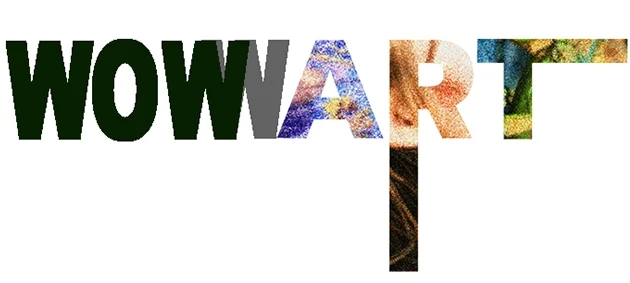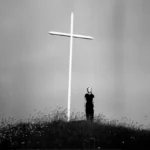Mona Kamal Weaves Stories Of Migration, Identity, And Belonging

Photo: Mona Kamal’s art is a profound testament to her creativity, courage, and ability to illuminate complex cultural and personal narratives. Photo by Arts Westchester
Exploring Borders And Belonging Through Art
Mona Kamal reflects on migration, identity, religion, and conflict through powerful multimedia art, exploring personal memories, family heritage, and marginalized communities affected by global issues.
Mona Kamal is a force in contemporary art, a visionary whose profound works bridge personal stories and global struggles. Through a career that spans more than two decades, she has established herself as a relentless narrator of migration, identity, and the intricate web of human experience. Her deeply impactful multimedia installations and videos invite viewers into complex narratives that challenge us to confront histories of displacement, questions of belonging, and the scars left by geopolitical divisions. Mona’s art is not only a testament to her remarkable technical skill and multidisciplinary talent, but also to her ability to use profoundly personal experiences as a lens through which we can understand larger, universal truths.
Mona’s artistic practice is rooted in exploration and dialogue, often incorporating familial histories, cultural artifacts, and traditional motifs to create deeply evocative works. Her creations—whether large-scale installations, intricate paper planes, or performative video pieces—carry a unique emotional resonance, one that reflects her migratory upbringing and cross-cultural perspective. She takes us on journeys, both literal and symbolic, through borders and memories, laying bare the shared humanity that transcends the lines dividing nations and religions. Exhibiting across the globe, from Canada to India, New York to Pakistan, her work resonates with audiences everywhere, speaking urgent truths about identity, inequality, and the invisible consequences of war.
“The repetitive nature of my process symbolizes the long journey experienced in the search for identity and equality.” –Mona Kamal
In this interview, Mona shares her insights into the themes that drive her creations, from migration and nationalism to religion and gender. As she explains the painstaking processes behind works like her haunting “Drones in Waziristan” installation or her symbolic, paper-plane-based piece, it’s clear that Mona’s art is not just visual, but visceral. Her work invites participation, reflection, and engagement with the realities faced by marginalized communities. Mona Kamal is not merely an artist; she is a storyteller, a provocateur, and a builder of bridges—connecting us to histories, emotions, and experiences that demand to be seen, felt, and understood. Her art serves as an essential reminder of the power of creativity to spark change and foster empathy in a divided world.
Can you discuss a specific installation or video project that best represents your exploration of migration and identity?
One project that specifically references both migration and identity is my 2013 video, Border Crossing. Here I cross the border from Pakistan to India. The work explores the border that was created through British India in 1948 that affected 10s of millions. Seeing the two countries together, one sees the futility of partition. The people look the same, speak the same language, and it is clear that both countries are poor and visibly dirty.
The video is also an exploration of my own identity. One can hear me struggling with the language and I am also dressed differently from the local people. It is clear that even though I have roots from these places, I do not live there.
How do you gather and incorporate family stories and historical artifacts into your work, and what role do they play in shaping your narratives?
I have traveled to both Pakistan and India to gather familial artifacts, such as manuscripts, photographs and letters. The partition split my family, so the search was perhaps for a missing link. This only created more of a disconnect, as there were so few photos and memories left of the family home – a time when the family was together.. Most recently, I have been gathering found objects from my Brooklyn neighborhood. These historical artifacts create nostalgia for a lost era and this is evoked in my artworks.
In what ways do you engage with current events in your art, and how do you see this reflecting the experiences of marginalized communities?
I have referenced the “war on terror” in my work by focussing on drone attacks in Pakistan (Drones in Waziristan). This piece is a carpet that has the date of every drone attack in Pakistan written on it. The carpet is usually exhibited on the floor and the gallery visitor can walk over the work. The act of walking over the work is symbolic of how the civilians of war are forgotten or overlooked during wartime.
I am currently in the process of creating 429 paper planes (see photo), the total number of drone attacks in Pakistan. The planes are being hung from the ceiling. When the viewer walks underneath the installation, they feel a heaviness coming from the work. It evokes a feeling that a civilian may have when they are living through a war – hearing and seeing war planes and the uncertainty of not knowing when they may be next.
How do you approach the themes of religion and conflict in your work, and what message do you hope to convey through these explorations?
All of my work references religion and religious conflict either indirectly or indirectly. My 2014 piece, The Women, directly references Islam. Here I engraved the chapter “The Women” from the Quran on a shape that resembles a burka clad woman. The idea was to speak about interpretation and create a dialogue about how both the East and West create stereotypes about the region.
Can you share how your experiences in different countries have shaped your understanding of nationalism and belonging, and how this is reflected in your artistic creations?
My migratory experience has enabled me to experience different cultures and various perspectives. However, it made me feel like an outsider as I always felt that I didn’t “belong” in any one place. My notion of nationalism does not come from borders and countries, but rather through cultural identity and the community that is created through it. All of my artwork reflects this, whether it is a work about drone attacks on a country that my family is from that are being led by the country in which I am living, a project about migration and migration stories or works where I am specifically searching for my roots, identity and place of belonging.

13 Years 7 Months 6 Days
Mona Kamal’s “13 Years 7 Months 6 Days” is a poignant and visually arresting installation that transforms historical tragedy into evocative art. Comprising 429 intricately painted paper planes suspended from the ceiling, the work signifies the drone attacks in Waziristan over the specified length of time. The overwhelming density of the planes and their stark precision evoke a visceral response—a haunting weight of loss and memory. Kamal’s meticulous process and concept showcase her mastery in fusing personal narrative with global issues, making this project both deeply moving and universally significant.
EDITOR’S HIGHLIGHTS
Empowering Art & Artists Globally
“Being featured in WOWwART means gaining visibility not just in print edition, but across the entire media spectrum in the US, UK, Europe and beyond”

EDITOR’S HIGHLIGHTS
Media, Art and Artist
Media is a powerful tool to build relationships, boost visibility, influence decisions, and create lasting impressions for success and growth.













